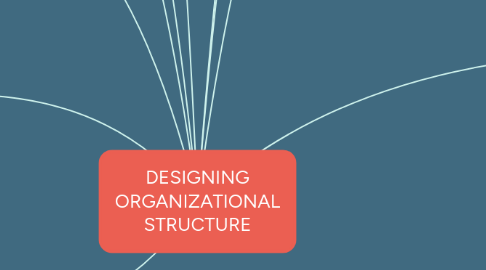
1. Authority
1.1. Right ingherent
1.2. Tell people what to do
1.3. Expect
1.4. Acceptance theory of authority
1.5. Line authority
1.6. Staff authority
2. Responsibility
3. Unity of command
4. Mechanistic and Organic structures
4.1. Mechanistic
4.1.1. Right and tightly controlled
4.1.2. High specialization
4.1.3. Centralization
4.1.4. Companies wanting to tightly control costs
4.2. Organic
4.2.1. Highly adaptive
4.2.2. Flexible
4.2.3. Pursuring meaningful
4.2.4. Unique innovation
5. Contigency
5.1. Strategy
5.2. Size
5.3. Technology
5.4. Environment
6. Tranditonal organizational design
6.1. Simple structure
6.1.1. Low departmentalization
6.1.2. Wide span of control
6.1.3. Centralization authority
6.1.4. Little formalization
6.2. Functional structure
6.2.1. Group together similar
6.2.2. Related occupational specialties
6.3. Divisional structure
6.3.1. Make up of seperate
6.3.2. Semi-autonomous units or divisions
7. Organizing
7.1. Arranging
7.2. Structuring
7.3. Accomplish goals
8. Organizational structure
8.1. Arrangement
8.2. Synthetic
8.3. Coordinate
9. Organizational chart
9.1. Group
9.2. Specific job
9.3. Responsible
10. Organization design
10.1. Work specialization
10.1.1. Dividing work
10.1.2. Lead to increase in productivity
10.2. Departmentalization
10.2.1. Group
10.2.1.1. Functional
10.2.1.2. Product
10.2.1.3. Geographical
10.2.1.4. Process
10.2.1.5. Customer
10.2.2. Trend
10.2.2.1. Increase use of customer departmentalization
10.2.2.2. Cross-functional team
10.3. Chain of command
10.3.1. Continuous line of authority
10.3.2. Upper to lowest level
10.3.3. Clarifies who reports to whom
10.4. Span of control
10.4.1. Employees
10.4.1.1. Effectively
10.4.1.2. Efficiently
10.4.2. Supervised by a manager
10.5. Centralization & Decentralization
10.5.1. Centralization
10.5.2. Decentralization
10.5.2.1. Lower level
10.5.2.1.1. Provide input
10.5.2.1.2. Make decisions
10.6. Formalization
10.6.1. Standardlized
10.6.2. Employee behavior
10.6.2.1. Rule
10.6.2.2. Procedure
10.6.3. Highly formalization
10.6.4. Low formalization
